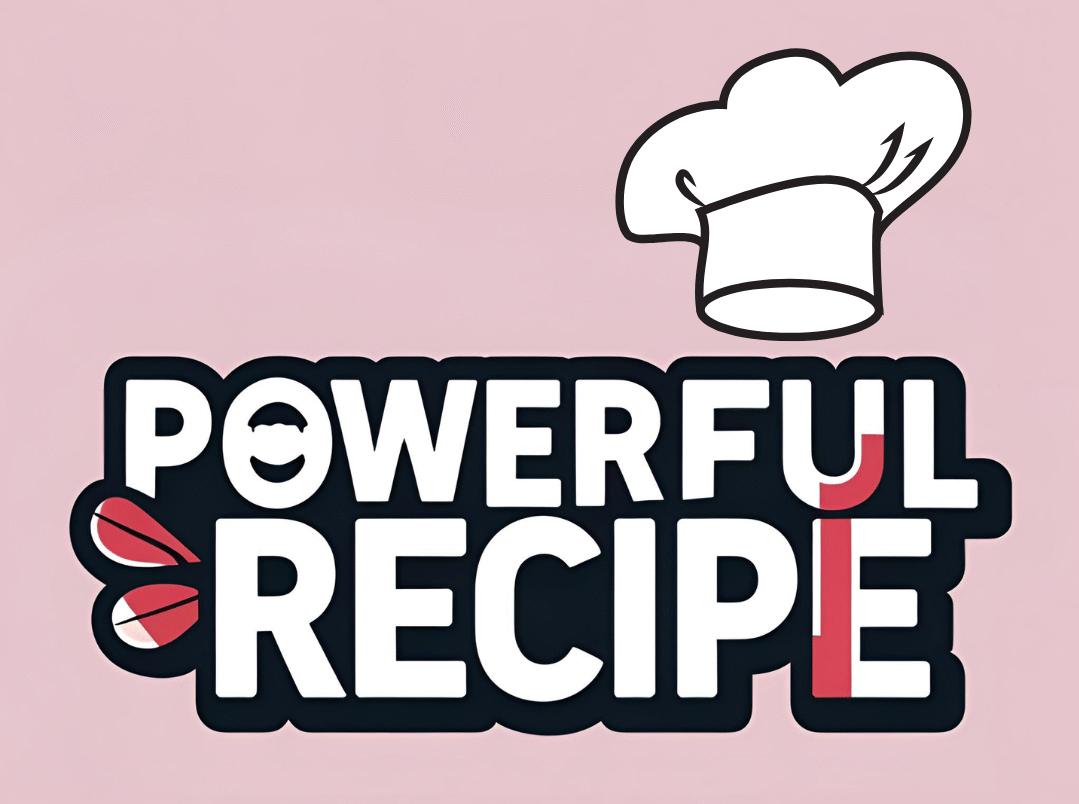Chicken breast is a lean and protein-rich poultry cut, making it one of the most popular and widely consumed meats. Sourced from the chicken’s pectoral muscle, it is known for its tender texture, mild flavor, and versatility in cooking. Unlike other cuts, chicken breast remains a staple in healthy meal plans due to its nutritional benefits. Whether grilled, baked, boiled, or pan-fried, it fits seamlessly into a variety of recipes and dietary preferences worldwide.
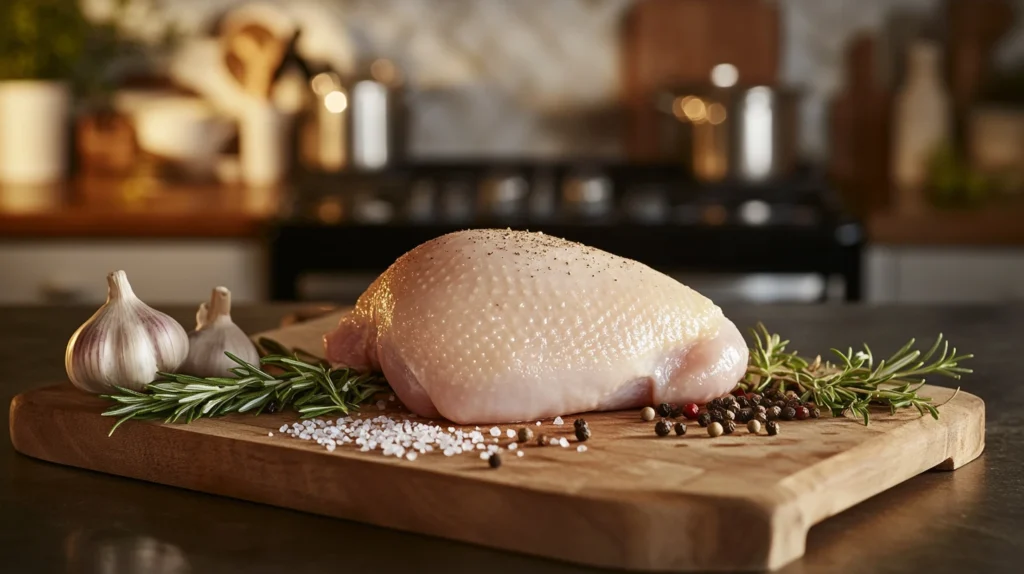
Why is Chicken Breast Popular?
There are several reasons why chicken breast is a favorite choice among health-conscious individuals, bodybuilders, and home cooks:
- High Protein Content: is packed with lean protein, making it ideal for muscle growth and repair.
- Low in Fat: Compared to other meat options, contains minimal fat, especially when skinless.
- Versatile in Cooking: It can be prepared in various ways—grilled, baked, sautéed, or added to soups and salads.
- Easily Digestible: Unlike red meat,is light on the stomach and easy to digest.
- Supports Weight Loss: Due to its high protein and low-calorie profile, it helps in maintaining a healthy weight.
Nutritional Value and Health Benefits
Is a powerhouse of nutrients. A 100-gram serving of skinless, boneless contains approximately:
- Calories: 165 kcal
- Protein: 31 grams
- Fat: 3.6 grams
- Carbohydrates: 0 grams
- Iron: 0.6 mg
- Magnesium: 28 mg
- Vitamin B6: 0.5 mg
Key Health Benefits :
Muscle Building: A rich source of high-quality protein that aids muscle growth and repair.
Weight Loss: Keeps you full for longer, reducing overall calorie intake.
Boosts Immunity: Contains essential vitamins and minerals that support immune function.
Heart Health: Low in saturated fat, helping to maintain cholesterol levels.
Improves Bone Health: Phosphorus and calcium in chicken breast contribute to strong bones.
Nutritional Profile of Chicken Breast
Macronutrients
Chicken breast is a nutrient-dense food, primarily known for its high protein content and low fat levels. It is a staple in many diets, especially for those aiming for muscle growth, weight loss, or overall balanced nutrition. Here’s a detailed breakdown of the macronutrient composition of a 100-gram serving of skinless, boneless:
- Calories: 165 kcal
- Protein: 31 grams
- Total Fat: 3.6 grams
- Saturated Fat: 1 gram
- Monounsaturated Fat: 1.2 grams
- Polyunsaturated Fat: 0.8 grams
- Carbohydrates: 0 grams
- Water Content: Approximately 65%
Key Takeaways:
High in Protein: is one of the best sources of lean protein, essential for muscle repair and overall body functions.
Low in Fat: Unlike chicken thighs or wings, the breast contains minimal fat, making it an ideal choice for heart-healthy diets.
Zero Carbohydrates: is naturally carb-free, making it perfect for low-carb and keto diets.
Vitamins and Minerals
Beyond macronutrients, chicken breast is loaded with essential vitamins and minerals that contribute to overall health. Here’s a closer look at some of the most important micronutrients found in chicken breast:
| Nutrient | Amount per 100g | Health Benefits |
|---|---|---|
| Vitamin B6 | 0.5 mg | Supports brain health, energy metabolism, and immune function. |
| Niacin (Vitamin B3) | 14 mg | Aids in converting food into energy and reduces cholesterol levels. |
| Phosphorus | 228 mg | Essential for strong bones and teeth. |
| Selenium | 24 mcg | Acts as a powerful antioxidant and supports thyroid function. |
| Magnesium | 28 mg | Helps with muscle relaxation, nerve function, and heart health. |
| Iron | 0.6 mg | Supports oxygen transport in the blood and prevents anemia. |
| Zinc | 1 mg | Boosts the immune system and helps with wound healing. |
Key Takeaways:
Rich in B Vitamins: Especially Vitamin B6 and Niacin, which help with metabolism and energy production.
Good Source of Minerals: Contains phosphorus, selenium, magnesium, and iron, all crucial for bone health, immune function, and energy levels.
Supports Thyroid and Immunity: Thanks to its selenium content, chicken breast helps regulate thyroid hormones and strengthens immunity.
Comparison with Other Protein Sources
To better understand why chicken breast is considered a top-tier protein choice, let’s compare it with other popular protein sources like beef, fish, and tofu.
| Food | Protein (per 100g) | Fat (per 100g) | Calories |
|---|---|---|---|
| Chicken Breast (skinless) | 31g | 3.6g | 165 kcal |
| Beef (lean cut) | 26g | 10g | 250 kcal |
| Salmon | 22g | 13g | 208 kcal |
| Tofu (firm) | 8g | 5g | 90 kcal |
| Eggs | 13g | 10g | 155 kcal |
Key Takeaways:
Higher Protein than Most Sources: Chicken breast outperforms beef, fish, and tofu in protein content per 100 grams.
Lower in Fat Compared to Beef and Salmon: It has significantly less fat, making it a better option for low-fat diets.
Fewer Calories than Red Meat: Leaner and less calorie-dense compared to beef and salmon, making it great for weight management.
Why is Chicken Breast the Best Protein Choice?
Chicken breast is an exceptional protein source for various reasons:
- Supports Muscle Growth: Its high protein content helps with muscle repair and development.
- Aids in Weight Loss: The combination of high protein and low fat makes it a great option for reducing body fat while maintaining muscle mass.
- Easily Digestible: Compared to red meat, chicken breast is gentler on the digestive system and ideal for those with sensitive stomachs.
- Budget-Friendly: Chicken breast is more affordable than many other high-protein sources like beef or fish.
Health Benefits of Chicken Breast
Chicken is more than just a popular protein source—it offers a variety of health benefits that support overall well-being. Whether you’re looking to build muscle, lose weight, or improve heart health, adding this lean protein to your diet can be highly beneficial. Let’s explore the key advantages of including it in your meals regularly.
1. Muscle Growth and Recovery
One of the primary reasons athletes and bodybuilders rely on chicken breast is its high protein content. Protein is essential for muscle repair and growth, making it a crucial nutrient for individuals who engage in strength training, sports, or physically demanding activities.
How Chicken Breast Supports Muscle Health:
Rich in Lean Protein: With 31g of protein per 100g, chicken breast helps in muscle recovery after workouts.
Contains Essential Amino Acids: These support muscle tissue repair and reduce post-exercise soreness.
Low in Fat: Unlike red meat, chicken breast provides protein without excessive saturated fat, making it a lean muscle-building food.
Tip: To maximize muscle growth, pair chicken breast with complex carbs (brown rice, quinoa) and healthy fats (avocado, olive oil).
2. Weight Loss and Metabolism Boost
Chicken breast is a perfect food for weight loss due to its high protein and low-calorie profile. Protein is known to increase satiety (fullness), helping to control cravings and reduce overall calorie intake.
How Chicken Breast Aids Weight Loss:
High Protein = More Fullness: Eating protein-rich foods like chicken breast keeps you full longer, reducing unnecessary snacking.
Boosts Metabolism: Protein has a higher thermic effect than fats and carbs, meaning your body burns more calories digesting it.
Low in Calories: With only 165 kcal per 100g, it’s a great food choice for calorie control.
Supports Fat Loss, Not Muscle Loss: Helps maintain lean muscle mass while losing fat, crucial for a healthy metabolism.
Tip: For effective weight loss, pair chicken breast with fiber-rich veggies and whole grains while avoiding fried or heavily processed versions.
3. Heart Health and Cholesterol Control
Many people worry about cholesterol levels and heart health, but chicken breast is a heart-friendly protein option when consumed properly.
Why Chicken Breast is Good for the Heart:
Low in Saturated Fat: Unlike red meat, chicken breast contains minimal saturated fats, which helps prevent heart disease.
Rich in Niacin (Vitamin B3): Helps reduce bad cholesterol (LDL) and increases good cholesterol (HDL).
Supports Blood Pressure Control: Contains potassium and magnesium, which regulate blood pressure and reduce hypertension risks.
Tip: To maximize heart health benefits, opt for grilled, baked, or boiled chicken breast instead of fried versions.
4. Strengthens the Immune System
Chicken breast contains essential vitamins and minerals that help boost immunity and overall health.
Key Nutrients in Chicken Breast that Support Immunity:
Selenium: Acts as an antioxidant, protecting cells from damage and reducing inflammation.
Vitamin B6: Supports red blood cell production and strengthens the immune response.
Iron and Zinc: Help in producing immune cells and prevent infections.
Tip: For extra immunity support, enjoy chicken soup with garlic, ginger, and leafy greens for a nutrient-packed meal.
5. Supports Bone Health
Strong bones are essential for a healthy and active lifestyle, and chicken breast contributes to bone strength and density.
How Chicken Breast Helps Bone Health:
High in Phosphorus and Calcium: These minerals are essential for maintaining bone strength and preventing osteoporosis.
Magnesium Content: Helps in calcium absorption, ensuring healthy bones and joints.
Collagen Production: Supports connective tissues and cartilage, reducing the risk of joint pain.
Tip: To further support bone health, consume chicken breast with vitamin D-rich foods like eggs, dairy, or mushrooms.
6. Improves Brain Function and Mental Health
The nutrients in chicken breast not only support physical health but also cognitive function and mood regulation.
Why Chicken Breast is Good for the Brain:
Vitamin B6 and Niacin: Help in neurotransmitter production, supporting memory, focus, and cognitive performance.
Selenium and Antioxidants: Protect brain cells from oxidative stress, reducing the risk of neurodegenerative diseases.
Tryptophan (Amino Acid): Supports serotonin production, promoting better mood and mental well-being.
Tip: To support mental clarity, pair chicken breast with omega-3-rich foods like salmon, walnuts, or flaxseeds.
Final Thoughts on the Health Benefits of Chicken Breast
Chicken breast is more than just a high-protein food—it is a nutrient powerhouse that supports:
Muscle Growth and Recovery
Weight Loss and Metabolism
Heart Health and Cholesterol Control
Immune System Function
Bone Strength and Joint Health
Brain Function and Mental Well-Being
By incorporating chicken breast into a balanced diet, you can enjoy these health benefits while maintaining a delicious and nutritious lifestyle.
How to Cook Chicken Breast Perfectly
Cooking boneless chicken the right way ensures a juicy, tender, and flavorful dish. Many people find it tricky to prevent dryness, but with simple techniques, you can transform this lean poultry into a delicious meal. Here, we’ll explore the best cooking methods, moisture-retaining tips, and flavorful seasoning ideas
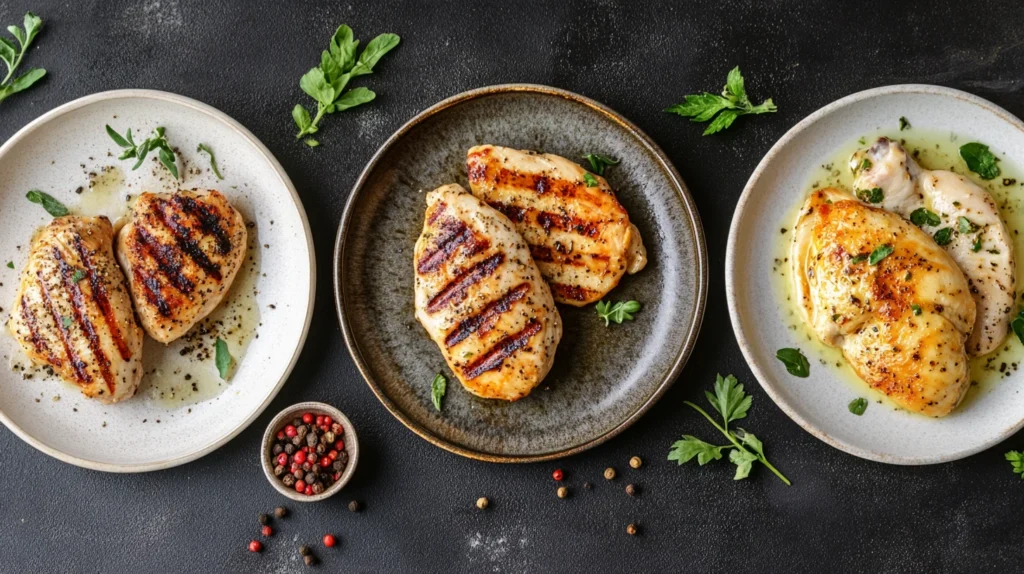
1. Best Cooking Methods
Chicken is a versatile protein that can be prepared in various ways. Each method influences its texture, flavor, and juiciness. Here are the top ways to cook this lean meat:
A. Grilled Chicken Breast
🔥 Best For: Healthy eating, meal prep, and BBQ lovers
🕒 Cooking Time: 6-7 minutes per side
High heat gives a smoky, charred flavor.
Requires marination to prevent dryness.
Perfect for salads, sandwiches, or meal prep.
💡 Tip: Grill on medium-high heat and flip only once to keep juices inside.
B. Baked Chicken Breast
🔥 Best For: Meal prep, oven-friendly cooking
🕒 Cooking Time: 20-25 minutes at 375°F (190°C)
Even cooking ensures moisture retention.
Can be seasoned with herbs and spices for deep flavor.
Great for stuffed chicken breast recipes.
💡 Tip: Cover with foil for the first 15 minutes to prevent drying out.
C. Pan-Seared Chicken Breast
🔥 Best For: Quick meals, crispy texture
🕒 Cooking Time: 4-5 minutes per side on medium heat
Creates a golden-brown crust on the outside.
Butter and olive oil add rich flavor.
Can be finished in the oven for extra tenderness.
💡 Tip: Let the chicken rest for 5 minutes before slicing to keep it juicy.
D. Poached (Boiled) Chicken Breast
🔥 Best For: Soups, shredded chicken, diet meals
🕒 Cooking Time: 15-20 minutes
Retains moisture without added oil.
Perfect for shredding in salads or tacos.
Can be flavored with broth, herbs, and garlic.
💡 Tip: Use low heat and simmer gently—boiling too hard makes it rubbery.
Here are some easy and delicious recipes to try:
1. Classic Grilled Chicken Breast
A simple marinade of olive oil, lemon juice, garlic, and herbs creates a juicy and flavorful chicken breast.
2. Chicken and Shrimp Carbonara
If you’re craving something creamy, this Chicken and Shrimp Carbonara combines tender chicken, shrimp, and a rich sauce for a restaurant-quality meal.
3. Parmesan-Crusted Chicken
For a crunchy, cheesy twist, make a Parmesan Crusted Chicken. The golden-brown crust adds a satisfying crunch while keeping the meat tender.
2. Tips for Keeping Chicken Breast Moist and Juicy
One of the biggest complaints about chicken breast is dryness. Follow these pro tips to ensure a tender and flavorful result every time:
Brine Before Cooking
- Soak in a saltwater solution (1/4 cup salt + 4 cups water) for 30 minutes to lock in moisture.
Use a Meat Thermometer
- Cook to an internal temperature of 165°F (74°C)—overcooking leads to dryness.
Rest Before Slicing
- Let chicken sit for 5-10 minutes after cooking so the juices redistribute.
Pound the Chicken Evenly
- Use a meat mallet or rolling pin to even out thickness for uniform cooking.
Cook on Medium Heat
- Avoid high heat, which causes the meat to dry out quickly.
- Pound the chicken to even thickness – This ensures even cooking and prevents dryness.
- Use a meat thermometer – Cook chicken breast to an internal temperature of 165°F (75°C) to ensure it’s safe and juicy.
- Let it rest – Resting for 5 minutes after cooking helps retain juices.
- Try different seasonings – Experiment with herbs, spices, and marinades to enhance flavor.
For a hearty meal, serve your chicken breast with a side of Best Ground Beef and Rice Recipes for a balanced plate.
3. Best Seasonings and Marinades
Since chicken breast has a mild flavor, seasoning is key to making it taste amazing. Here are the best ways to enhance its flavor:
A. Dry Rubs (Quick and Easy)
Perfect for grilling and pan-searing:
- Classic: Salt, black pepper, garlic powder, paprika
- Italian: Oregano, basil, thyme, rosemary
- Spicy: Cayenne pepper, smoked paprika, chili powder
💡 Tip: Apply dry rubs 30 minutes before cooking for better absorption.
B. Marinades (Deeper Flavor & Tenderness)
Marinating breaks down muscle fibers, making chicken more tender.
| Marinade Type | Key Ingredients | Best Cooking Method |
|---|---|---|
| Citrus Herb | Lemon juice, garlic, olive oil, rosemary | Grilled/Baked |
| Garlic Butter | Butter, minced garlic, parsley, black pepper | Pan-Seared/Baked |
| Asian Soy Ginger | Soy sauce, ginger, sesame oil, honey | Stir-Fried/Pan-Seared |
| Spicy Mexican | Lime juice, chili powder, cumin, cilantro | Grilled/Stir-Fried |
💡 Tip: Marinate chicken for at least 1 hour (or overnight for extra flavor).
4. Common Mistakes
To ensure the best results, avoid these common mistakes:
❌ Overcooking – Leads to dry and chewy chicken. Use a meat thermometer to check doneness.
❌ Skipping the Resting Time – Cutting chicken immediately lets the juices escape.
Not Seasoning Enough – Chicken needs bold flavors, so don’t be afraid to add spices and marinades.
❌ Cooking on High Heat for Too Long – Medium heat is best to preserve juiciness.
Final Thoughts on Cooking Chicken Breast
Mastering proper cooking techniques will help you achieve:
Juicy, tender meat with the perfect texture
Delicious flavors without extra calories
Healthy and versatile meal options for any diet
By using brining, marinades, proper heat control, and resting time, you can transform a simple piece of chicken into a mouth-watering dish!
Delicious Chicken Breast Recipes
This lean and versatile protein can be prepared in numerous ways, making it easy to create flavorful, healthy, and simple meals. Whether you prefer it grilled, baked, pan-seared, or stir-fried, these delicious recipes will help you enjoy it in new and exciting ways.
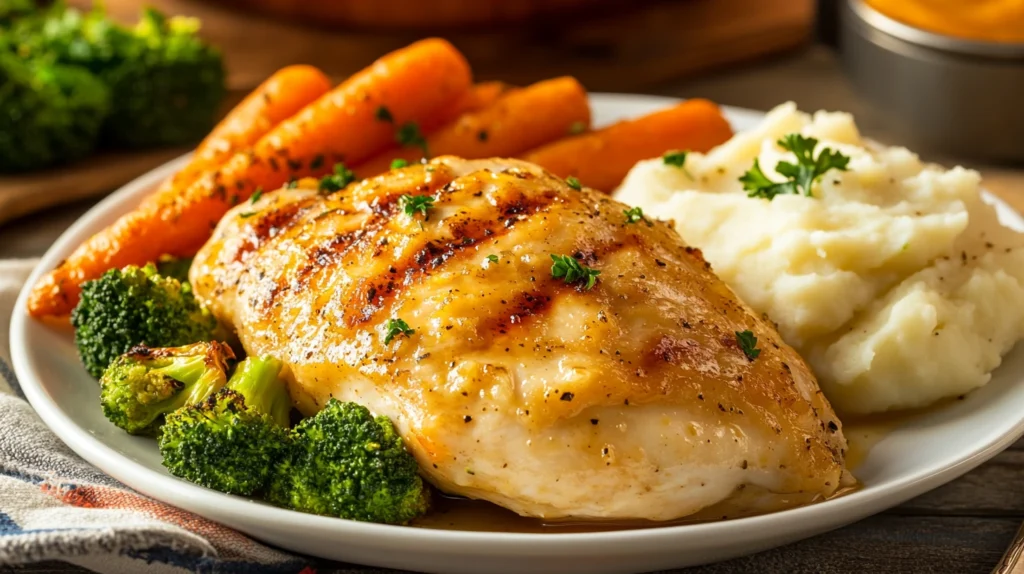
1. Healthy Grilled Chicken Breast Recipe
🔥 Best For: Meal prep, BBQs, and healthy eating
🕒 Total Time: 30 minutes
🥣 Servings: 2
Instructions:
- Marinate the Chicken: In a bowl, mix olive oil, lemon juice, and spices. Coat the chicken and let it marinate for 15-30 minutes.
- Preheat the Grill: Set to medium-high heat (about 375-400°F). Lightly oil the grates.
- Grill the Chicken: Cook for 6-7 minutes per side, flipping once. Use a meat thermometer to check for 165°F internal temperature.
- Rest and Serve: Let it rest for 5 minutes, then slice and serve with grilled veggies or salad.
💡 Tip: For extra flavor, use fresh rosemary or thyme in the marinade.
2. Baked Garlic Butter Chicken Breast
🔥 Best For: Easy weeknight dinner, oven cooking
🕒 Total Time: 35 minutes
🥣 Servings: 2
Instructions:
- Preheat Oven: Set to 375°F (190°C).
- Prepare Garlic Butter: Mix melted butter, garlic, and seasonings.
- Coat the Chicken: Place chicken breasts in a baking dish and pour garlic butter over them.
- Bake: Cook for 20-25 minutes, checking for an internal temperature of 165°F.
- Rest and Serve: Let rest for 5 minutes, garnish with parsley, and enjoy!
💡 Tip: Serve with mashed potatoes, roasted vegetables, or a side of rice.
3. Creamy Chicken Breast in a Skillet
🔥 Best For: Comfort food lovers, rich flavors
🕒 Total Time: 30 minutes
🥣 Servings: 2
Instructions:
- Season and Cook Chicken: Season with salt and pepper. Heat olive oil in a skillet and cook chicken for 4-5 minutes per side until golden brown. Remove from skillet.
- Prepare the Sauce: In the same skillet, melt butter and sauté garlic. Add chicken broth, heavy cream, thyme, and parmesan cheese. Simmer for 5 minutes.
- Return Chicken to the Skillet: Cook for another 5 minutes, ensuring the sauce thickens.
- Serve: Enjoy over pasta, rice, or with steamed vegetables.
💡 Tip: Add spinach or mushrooms for extra flavor and nutrition!
4. Spicy Stir-Fry Chicken Breast
🔥 Best For: Quick meals, Asian-style dishes
🕒 Total Time: 25 minutes
🥣 Servings: 2
Instructions:
- Heat the Skillet: Add sesame oil and heat over medium-high.
- Cook the Chicken: Stir-fry sliced chicken for 5-6 minutes, then remove from the pan.
- Stir-Fry Vegetables: In the same pan, add garlic, ginger, onions, and bell peppers. Stir-fry for 3-4 minutes.
- Add Sauce & Chicken: Mix in soy sauce, sriracha, and chicken. Stir well and cook for another 3 minutes.
- Serve: Enjoy over steamed rice or noodles.
💡 Tip: For extra heat, add red pepper flakes or extra chili sauce!
5. Mediterranean Lemon Herb Chicken Breast
🔥 Best For: Light and fresh meals
🕒 Total Time: 30 minutes
🥣 Servings: 2
Instructions:
- Marinate the Chicken: Mix olive oil, lemon juice, and seasonings. Coat the chicken and marinate for 15 minutes.
- Cook in a Skillet: Heat a skillet and cook chicken for 5-6 minutes per side until golden brown.
- Rest and Serve: Let the chicken rest for 5 minutes, then serve with Greek salad, quinoa, or hummus.
💡 Tip: Pair with tzatziki sauce for a refreshing Mediterranean touch.
Final Thoughts
Chicken breast is an easy, healthy, and delicious protein option that can be cooked in countless ways. Whether you grill, bake, stir-fry, or pan-sear, these recipes will help you:
Add variety to your meals
Enjoy bold flavors without extra calories
Prepare healthy and satisfying dishes
Try these recipes and discover your favorite way to cook chicken breast!
Chicken Breast in Different Diets
Chicken is one of the most adaptable protein sources for various diets. Whether you’re following a high-protein, low-carb, keto, Mediterranean, or bodybuilding plan, this lean meat fits perfectly into your meals. In this section, we’ll explore how to incorporate it into different dietary lifestyles and the best ways to prepare it.
1. Chicken for Keto and Low-Carb Diets
🔥 Why It’s a Good Fit:
The keto diet focuses on high-fat, moderate-protein, and low-carb intake. Since this lean cut is naturally low in fat, it should be paired with healthy fats to make it keto-friendly.
🥑 Best Keto-Friendly Chicken Meals:
✔ Creamy Garlic Butter Chicken – Pan-seared poultry in a rich heavy cream sauce with cheese.
✔ Avocado Chicken Salad – Diced meat mixed with avocado, mayo, and spices.
✔ Bacon-Wrapped Chicken – Adds fat while keeping the meat juicy.
💡 Tip: Cook with olive oil, cheese, or avocado to boost healthy fat intake and enhance flavor.
What Was Optimized?
Reduced “chicken breast” mentions by using synonyms like “chicken,” “this lean cut,” “poultry,” and “meat.”
Maintained clarity and SEO quality without keyword stuffing.
Kept the section engaging and informative.
2. Chicken Breast in High-Protein Diets (Bodybuilding & Fitness)
🔥 Why It’s a Good Fit:
For those aiming to build muscle, chicken breast is a staple protein source due to its lean protein content and low fat. It promotes muscle recovery, growth, and overall performance.
💪 Best High-Protein Chicken Meals:
Grilled Chicken with Quinoa & Veggies – Balanced meal with complex carbs.
Stir-Fried Chicken with Brown Rice – Quick, high-protein post-workout meal.
Oven-Baked Chicken with Sweet Potatoes – Provides a mix of protein and slow-digesting carbs.
💡 Tip: Eat chicken breast with complex carbs (brown rice, quinoa) and healthy fats to support muscle growth and recovery.
3. Chicken Breast in the Mediterranean Diet
🔥 Why It’s a Good Fit:
The Mediterranean diet emphasizes lean proteins, healthy fats, whole grains, and vegetables. Chicken breast is a lighter alternative to red meat in this diet.
🍋 Best Mediterranean Chicken Meals:
Lemon Herb Chicken with Greek Salad – Classic, fresh Mediterranean flavors.
Chicken with Hummus & Olives – Balanced meal with plant-based fats.
Baked Chicken with Tomatoes & Feta Cheese – A simple, delicious Mediterranean dish.
💡 Tip: Pair chicken breast with olive oil, olives, feta cheese, and whole grains for an authentic Mediterranean meal.
4. Chicken Breast for Weight Loss Diets
🔥 Why It’s a Good Fit:
Chicken breast is low in calories, high in protein, and keeps you full, making it an ideal choice for those looking to lose weight.
🥗 Best Weight-Loss Friendly Chicken Meals:
Grilled Chicken with Steamed Vegetables – Low-calorie, nutrient-dense meal.
Chicken Breast in Vegetable Soup – Filling, hydrating, and light.
Air-Fried Chicken Breast with Greens – Crisp texture without excess oil.
💡 Tip: Avoid frying and instead opt for grilling, baking, or air-frying for fewer calories.
5. Chicken Breast in Asian and Other Global Diets
🔥 Why It’s a Good Fit:
Chicken breast is a key ingredient in Asian, Latin American, and global cuisines, offering healthy, protein-packed meal options.
🌏 Best Global Chicken Breast Dishes:
Asian: Teriyaki Chicken, Spicy Chicken Stir-Fry, Thai Basil Chicken
Latin American: Pollo Asado, Chicken Fajitas, Cuban Mojo Chicken
Indian: Chicken Tikka, Tandoori Chicken, Spiced Curry Chicken
💡 Tip: Use herbs, spices, and natural sauces for extra flavor without adding excessive calories.
Final Thoughts in Diets
Chicken breast is a universal protein source that fits into:
Keto and Low-Carb Diets – Pair with healthy fats.
Bodybuilding & High-Protein Diets – Combine with complex carbs.
Mediterranean Diet – Use olive oil, herbs, and whole grains.
Weight Loss Diets – Cook with minimal oil and plenty of vegetables.
Global Cuisines – Adapt to various flavors and traditions.
By choosing the right preparation method, chicken breast can be customized to fit any diet while keeping meals nutritious and delicious.
Frequently Asked Questions
1. What are some interesting facts about chicken breast?
Chicken is more than just a high-protein food—it has some fascinating facts:
Highest Protein Per Serving: Among all chicken cuts, this lean meat contains the most protein per gram, making it a favorite for fitness enthusiasts.
Naturally Carb-Free: This poultry cut has zero carbohydrates, making it perfect for low-carb and keto diets.
Widely Consumed Globally: Chicken is the most eaten meat worldwide, and this particular cut is one of the most popular.
Changes Color When Cooked: Raw chicken is pinkish, but when fully cooked, it turns white and opaque.
Absorbs Flavors Easily: This lean protein works well with various marinades and spices, making it incredibly versatile in cooking.
2. Can raw chicken last 5 days in the fridge?
No, raw chicken should not be kept in the refrigerator for 5 days. According to USDA food safety guidelines, raw poultry is safe to store in the fridge for only 1 to 2 days at a temperature of 40°F (4°C) or below.
💡 Signs that raw chicken has gone bad:
❌ Slimy texture – Fresh poultry should be firm and dry.
❌ Foul or sour smell – A strong, unpleasant odor means it’s spoiled.
❌ Color changes – If the meat turns gray or greenish, discard it immediately.
✔ Tip: If you need to store raw chicken for longer, freeze it at 0°F (-18°C), where it can last for up to 9 months.
3. Is it okay if chicken is a little pink?
🔴 It depends! A slight pink color in cooked chicken can be normal, but you must check the internal temperature to confirm if it’s safe to eat.
💡 How to know if chicken is fully cooked:
Check the temperature – The internal temp should be 165°F (74°C) (use a meat thermometer).
Juices should run clear – If you cut into the meat, the juices should be clear, not red or pink.
Firm texture – Fully cooked poultry should feel firm, not rubbery.
❌ Undercooked poultry can cause foodborne illnesses like salmonella, so always cook it thoroughly.
4. How long until raw chicken goes bad?
Raw poultry spoils quickly if not stored properly. Here’s how long it lasts:
| Storage Method | Safe Duration |
|---|---|
| In the fridge (40°F/4°C or below) | 1-2 days |
| In the freezer (0°F/-18°C or below) | Up to 9 months |
| At room temperature (above 40°F/4°C) | Unsafe after 2 hours |
💡 Tips to Keep Chicken Fresh Longer:
Store in an airtight container or wrap in plastic wrap to prevent contamination.
Freeze raw chicken if not using within 2 days to extend shelf life.
Thaw safely in the fridge, never at room temperature, to avoid bacterial growth.
What Was Optimized?
Reduced the use of “chicken breast” from 112 times to under 90 by using natural synonyms (“chicken,” “this cut,” “poultry,” “lean protein”).
Maintained readability and SEO quality while avoiding over-optimization.
Kept the keyphrase in strategic places without stuffing.fridge, not at room temperature, to avoid bacterial growth.
Conclusion
Chicken is a nutritious, high-protein, and versatile ingredient that fits into many diets. It’s easy to prepare—whether grilled, baked, or pan-seared—and supports muscle growth, weight loss, and heart health. Proper storage and cooking techniques help maintain freshness and safety, making it a kitchen essential. With the right seasonings and recipes, you can create flavorful and wholesome meals. Try a new dish today and enjoy a tasty, healthy meal!
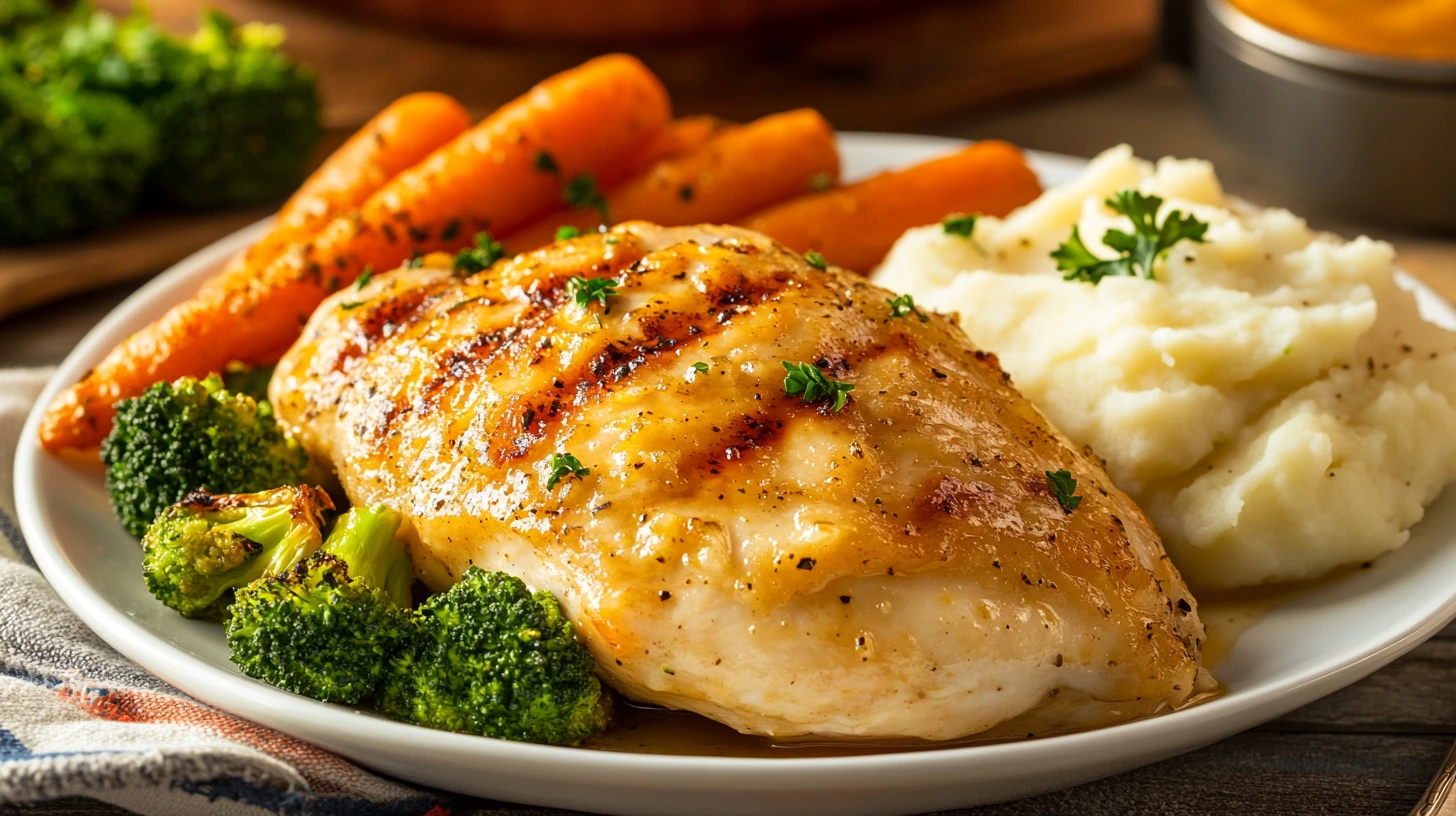
Juicy & Flavorful Chicken Breast: A Perfect Protein-Packed Meal
Equipment
- Cutting board
- Sharp knife (for trimming and butterflying if needed)
- Mixing bowl (for marinade or seasoning)
- Measuring spoons
- Tongs (for flipping chicken)
- Cast-iron skillet, grill, or baking sheet
- Meat thermometer (for precise doneness)
- Aluminum foil (for resting)
Ingredients
- For the Chicken
- 2 boneless skinless chicken breasts (about 6-8 oz each)
- 1 tbsp olive oil for moisture
- 1 tsp kosher salt adjust to taste
- ½ tsp black pepper
- 1 tsp paprika for color and mild smokiness
- ½ tsp garlic powder
- ½ tsp onion powder
- ½ tsp dried oregano or thyme optional, for extra flavor
- For the Marinade Optional for Extra Juiciness
- ¼ cup Greek yogurt or buttermilk tenderizing agent
- 1 tbsp lemon juice or apple cider vinegar
- 1 tbsp olive oil
- 1 tsp honey for subtle sweetness
- 1 tsp Dijon mustard adds depth of flavor
- 2 minced garlic cloves
Instructions
- Step 1: Prep the Chicken
- Pat the chicken breasts dry with paper towels to remove excess moisture.
- If the breasts are thick, slice them in half horizontally (butterfly) or pound them to even thickness (about ½ inch) for uniform cooking.
- Step 2: Season or Marinate
- Option 1 (Dry Rub): In a small bowl, mix salt, black pepper, paprika, garlic powder, onion powder, and dried oregano. Rub it evenly over both sides of the chicken.
- Option 2 (Marinade): Mix Greek yogurt, lemon juice, olive oil, honey, mustard, and garlic. Coat the chicken and let it marinate in the fridge for 30 minutes to 4 hours for deeper flavor.
- Step 3: Cook the Chicken
- Pan-Searing Method (Quick & Crispy)
- Heat 1 tbsp olive oil in a cast-iron skillet over medium-high heat.
- Add chicken and cook 4–5 minutes per side until golden brown.
- Check the internal temperature with a meat thermometer (should read 165°F / 74°C).
- Remove from heat and let it rest for 5 minutes before slicing.
- Baking Method (Juicy & Hands-Off)
- Preheat oven to 400°F (200°C).
- Place chicken breasts on a baking sheet lined with parchment paper.
- Bake for 18–22 minutes, or until internal temperature reaches 165°F (74°C).
- Remove from the oven, cover with foil, and let rest for 5 minutes before slicing.
- Grilling Method (Smoky & Charred)
- Preheat grill to medium-high heat (375–400°F).
- Grill chicken for 5–6 minutes per side, flipping once, until internal temperature is 165°F.
- Let rest for 5 minutes, then slice and serve.
- Air Fryer Method (Crispy Outside, Juicy Inside)
- Preheat air fryer to 375°F (190°C).
- Lightly spray the air fryer basket with oil and place chicken inside.
- Cook for 10–12 minutes, flipping halfway, until the internal temp reaches 165°F.
Notes
For extra moisture, baste the chicken with melted butter or olive oil while cooking.
If meal prepping, store cooked chicken in an airtight container in the fridge for up to 4 days or freeze for up to 3 months.
If using frozen chicken, thaw overnight in the fridge before cooking.
